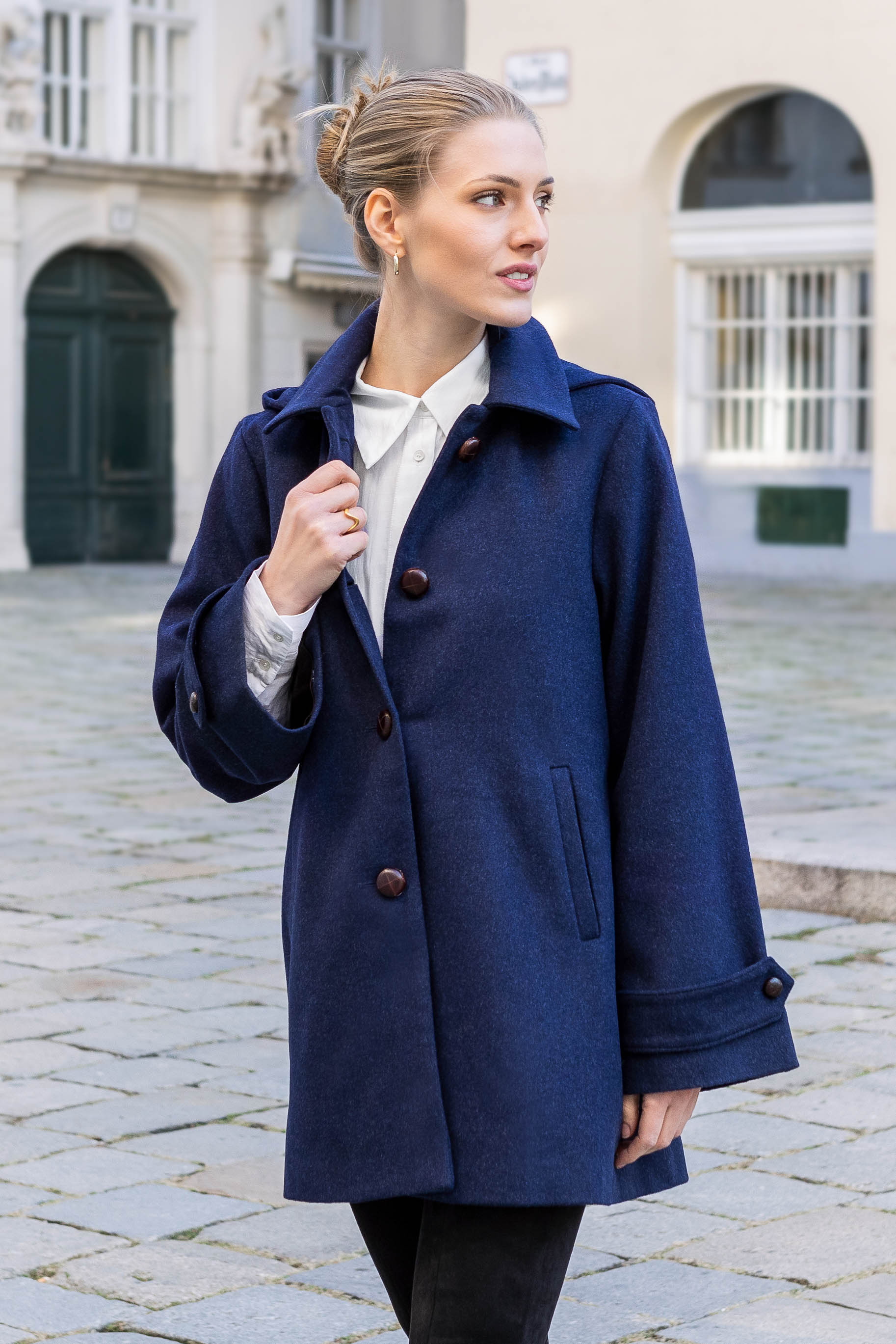Your Cart is Empty


Men's Austrian Loden Wool Coats & Outerwear
Authentic Austrian Loden Wool Overcoats
In order to appreciate the novelty of our collection of men's wool overcoats, it is important to understand their history, because these are far more than a fashion trend. First of all, just to clear this up, the color loden green refers to a dark green color very popular among Austrian Coats - but the real meaning of 'loden' is something else entirely. Loden refers to both a specific type of wool fabric as well as the style of dress that fabric is used in. In Austria the color Loden green is usually referred to in German as "oliv". Only in non-German speaking realms has Loden come to mean a color.
More importantly, Austrian Loden Coats are derived centuries ago from necessity to survive the brutally cold and snowy Alpine climate. The local mountain sheep, 'bergschaf' in german, were sheared and their oily fleece was loosely woven before undergoing an extensive wet-finishing process. That process, called fulling, or 'walken' in German, is similar to felting and results in a thick, impermeable fabric that when used in a men's Loden Coat or a Loden Cape, would keep a Tirolean shepherd warm and dry through the harshest winter. For a thorough explanation of the Loden process, click here to read all about. Back then the Austrian Coats were cut large so extra layers could be worn underneath as needed and that has stayed true until today.
However, the modern style of men's wool overcoats evolved much later when they were adopted by the Habsburg Court in Vienna. The aristocracy didn't like the very rough loden favored by their subjects, the Alpine herdsmen, but they did want to incorporate their style. This occurred in the era of Romanticism, (early - mid 1800's) and the Duke Erzherzog Johann set the trend. To accommodate their tastes, finer fibers, like from Alpaca, were imported to create the famous 'Himalaya Loden' and a new style of Austrian Loden Coats was developed.
The original mens Loden coat was worn by men of the Alps, but the forces of history have made the style a pillar of classic European dress and can be seen in every major European city as well as in the United States by the culturally affluent and quality conscious.
Sud Tiroler - Men's Loden Overcoat in Camel with zip out lining
all-productsfull-length-long-wool-coatsclassic-loden-coatsauthentic-loden-coatsmen
Sud Tiroler - Men's Loden Overcoat in Camel with zip out lining
$1,283.00
View more
Sud Tiroler - Men's Loden Overcoat in Camel with zip out lining
$1,283.00
Holmes - Traditional Austrian Capelet Coat or Inverness Coat
all-productsclassic-loden-coatsauthentic-loden-coatsmen
Holmes - Traditional Austrian Capelet Coat or Inverness Coat
$1,349.00
View more
Holmes - Traditional Austrian Capelet Coat or Inverness Coat
$1,349.00
Tirol Traditional Austrian Hunting Loden Wool Overcoat Unlined
all-productsfull-length-long-wool-coatsclassic-loden-coatsauthentic-loden-coatsmen
Tirol Traditional Austrian Hunting Loden Wool Overcoat Unlined
$1,078.00
View more
Tirol Traditional Austrian Hunting Loden Wool Overcoat Unlined
$1,078.00
Men's Classic Loden Overcoat "Shiver No More"
all-productsfull-length-long-wool-coatsclassic-loden-coatsauthentic-loden-coatsmen
Men's Classic Loden Overcoat "Shiver No More"
$949.00
View more
Men's Classic Loden Overcoat "Shiver No More"
$949.00
Rory - Men's Travel Weight Classic Loden Wool Overcoat with Raglan Sleeves
all-productsfull-length-long-wool-coatsclassic-loden-coatsauthentic-loden-coatsmen
Rory - Men's Travel Weight Classic Loden Wool Overcoat with Raglan Sleeves
View more
Sold Out
Coming Soon
Rory - Men's Travel Weight Classic Loden Wool Overcoat with Raglan Sleeves
Sold Out
Sud Tiroler - Men's Loden Green Overcoat with zip out lining
all-productsfull-length-long-wool-coatsclassic-loden-coatsauthentic-loden-coatsmen
Sud Tiroler - Men's Loden Green Overcoat with zip out lining from
$1,196.00
View more
Sud Tiroler - Men's Loden Green Overcoat with zip out lining from
$1,196.00
Richard - 100% Cashmere Men's Full Length Charcoal Loden Overcoat
full-length-long-wool-coatsclassic-loden-coatsauthentic-loden-coatsmen
Richard - 100% Cashmere Men's Full Length Charcoal Loden Overcoat
$1,956.00
View more
Richard - 100% Cashmere Men's Full Length Charcoal Loden Overcoat
$1,956.00
Joseph - Men's Black Himalaya Loden Wool Car Coat
all-productsclassic-loden-coatsauthentic-loden-coatsmen
Joseph - Men's Black Himalaya Loden Wool Car Coat
$649.00
View more
Joseph - Men's Black Himalaya Loden Wool Car Coat
$649.00
Markus - Men's Loden Wool Duffel Coat with Detachable Hood
all-productsclassic-loden-coatsauthentic-loden-coatsmen
Markus - Men's Loden Wool Duffel Coat with Detachable Hood
$710.00
View more
Markus - Men's Loden Wool Duffel Coat with Detachable Hood
$710.00
Liezen - Loden Wool Cruiser Winter Coat
all-productsclassic-loden-coatsauthentic-loden-coatsmen
Liezen - Loden Wool Cruiser Winter Coat
$759.00
View more
Liezen - Loden Wool Cruiser Winter Coat
$759.00
Sud Tiroler - Men's Loden Overcoat in Navy Blue with zip out lining
all-productsfull-length-long-wool-coatsclassic-loden-coatsauthentic-loden-coatsmen
Sud Tiroler - Men's Loden Overcoat in Navy Blue with zip out lining
$1,283.00
View more
Sud Tiroler - Men's Loden Overcoat in Navy Blue with zip out lining
$1,283.00






































































































